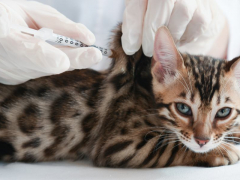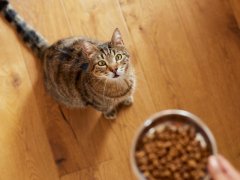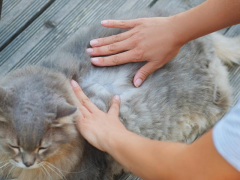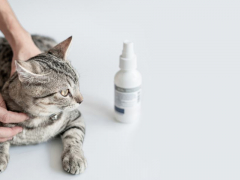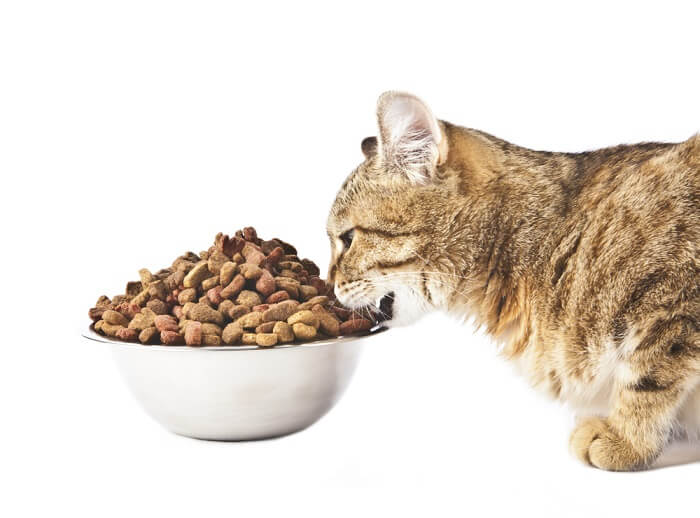
FortifFlora Feline Probiotic Supplement is a probiotic supplement made by Nestle Purina as part of their Pro Plan Veterinary Supplements line of products.
In this article you’ll learn what FortifFlora is, how it works as a probiotic, evidence to support its use, and some frequently asked questions.
Fortiflora Probiotic for Cats Overview

About Fortiflora for Cats
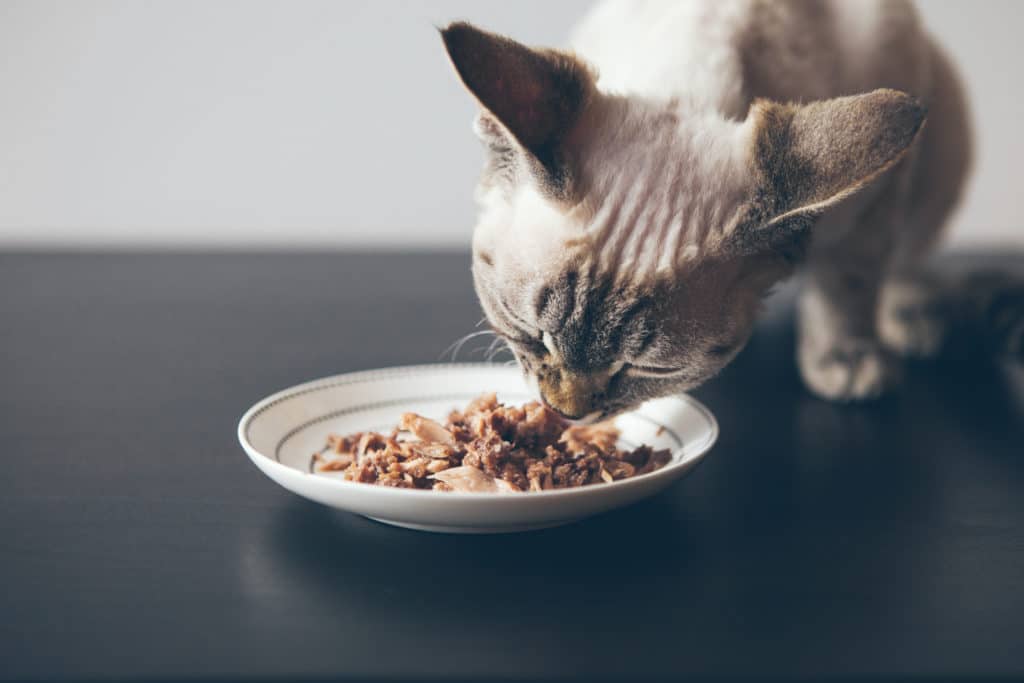
Purina Pro Plan Veterinary Supplements FortifFlora is a probiotic supplement indicated to help promote better stool quality and digestive health and balance.
The intestinal tract is an environment that supports many strains of different types of bacterial microflora that all need to be maintained within a certain balance to help with proper digestion and avoid digestive upset.
If there is a shift in the bacterial balance within the digestive tract, this can lead to overgrowth of some bacteria that may contribute to what is called dysbiosis, where we can see digestive issues like loose stool and diarrhea develop.
What a probiotic seeks to do is to help restore and maintain that balance for intestinal health by providing one or more strains of beneficial commensal bacteria to counteract the growth of other bacteria that may be more harmful if allowed to overpopulate within the gut.
Also Read: 11 Best Probiotics For Cats
The bacterial strain that FortifFlora contains is called Enterococcus faecium.
Fortiflora comes in a box containing 30 packets of flavored powder that is typically mixed with canned or soft food once daily.
As a supplement, FortifFlora can be purchased over the counter without a prescription. Although a prescription is not needed, it’s still best to use this product under direction of your veterinarian for the best results.
FortiFlora SA Synbiotic Action is a variation on the original FortifFlora product. FortifFlora SA contains psyllium fiber, which acts as a prebiotic to promote the growth of other specific commensal bacteria like Lactobacillus and Bifidobacterium species.
What Does Fortiflora Do for Cats?
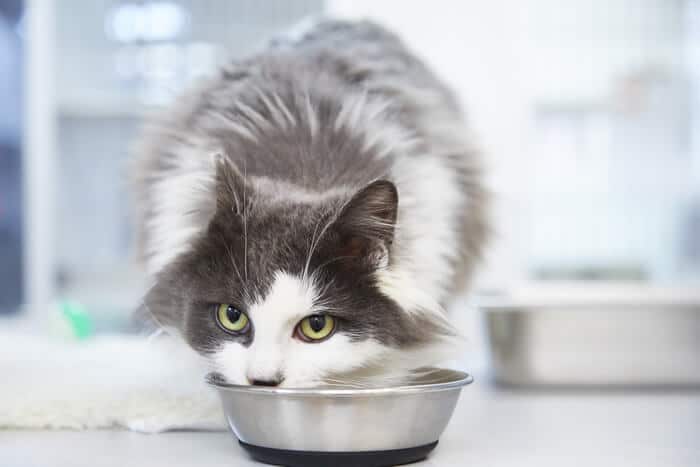
The bacterial strain that FortifFlora contains, Enterococcus faecium, is a strain of bacteria naturally found within the digestive tract.
Enterococcus bacteria have some specific characteristics that can make them a useful bacterial type to include in a probiotic.
A 2018 article in Frontiers of Microbiology entitled “The Genus Enterococcus: Between Probiotic Potential and Safety Concerns—An Update” describes some of these characteristics.
Enterococcus bacteria are highly competitive and resistant to changes in temperature and pH. This means they can more easily survive environmental changes traveling in a probiotic powder form through the stomach and into the intestinal tract.
The manufacturer also indicates that FortiFlora is manufactured using a proprietary microencapsulation process for enhanced stability to aid in passage through the GI tract.
Enterococcus bacteria produce compounds called bacteriocins, which have the ability to target certain other bacterial strains, especially pathogenic (disease-causing) bacteria like Salmonella, Listeria, and Clostridium species.
The combination of outcompeting undesirable bacteria as well as being able to target and inhibit them is what gives FortiFlora some of its distinctive advantage as there are only a couple of veterinary supplements approved to include Enterococcus faecium.
Some folks may wonder how a powdered supplement kept at room temperature could possibly contain live microorganisms.
A really great article from 2020 that answers this question is blog article posted on the website for the International Scientific Association for Probiotics and Prebiotics (ISAPP) written by Gabriel Vinderola, PhD, an associate professor in microbiology at the National University of Litoral in Argentina.
In the article, Professor Vinderola describes that most probiotic products appear as a white powder due to the process of freeze-drying or lyophilization. By quickly removing water from around and inside the bacterial cells, the microbes are not killed, but enter a dormant state where their metabolic activity is put on hold.
When these dormant little bacteria enter the gut, the environmental conditions trigger a restart in the metabolic processes of the bacteria, allowing them to grow, reproduce, and generally be active to provide their health benefits.
It’s true that some amount of cell death may still occur during a product’s shelf life, but this is one reason why such high levels of colony forming units (CFUs) are found in probiotics. FortiFlora contains 100 million colony forming units of Entercoccus faecium, which is a moderate amount. Some probiotics may contain billions of CFUs in different combinations.
There is research evidence that does support FortiFlora’s use in cats as a way of supporting kitties experiencing diarrhea from presumed bacterial imbalance.
Back in 2011, a study published in the Journal of Veterinary Internal Medicine entitled “Effect of the Probiotic Enterococcus faecium SF68 on Presence of Diarrhea in Cats and Dogs Housed in an Animal Shelter,” found that when given to just over 200 cats, the percentage of cats with diarrhea given FortiFlora was considerably lower when compared to a placebo group.
More recently in 2017, a study published in Topics in Companion Animal Medicine entitled “Effect of Enterococcus faecium Strain SF68 on Gastrointestinal Signs and Fecal Microbiome in Cats Administered Amoxicillin-Clavulanate,” found that in cats given the common antibiotic amoxicillin-clavulanate for seven days, cats given FortiFlora for 14 days had better fecal scores compared to cats given a placebo for the same period of time.
Side Effects of Fortiflora for Cats
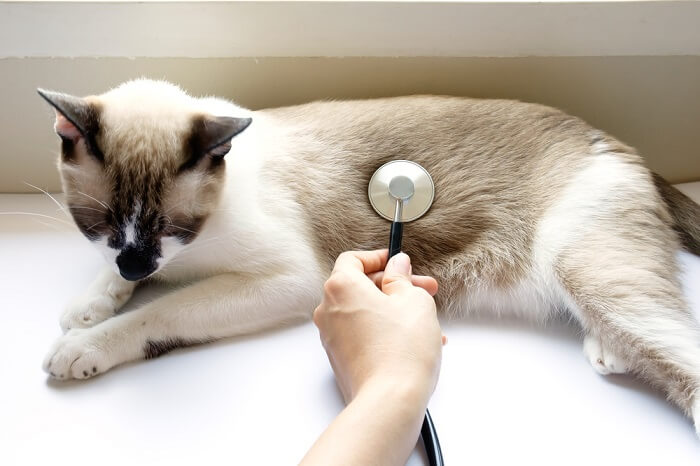
Talk to your veterinarian before starting any new supplement, including probiotic supplements like FortiFlora.
According to the manufacturer, FortiFlora for cats is not known to have any observed or expected side effects. And generally, many veterinarians would agree that probiotics appear to be safe and well-tolerated by a majority of pets.
Some folks may recognize Enterococcus as a bacteria that has the potential to cause disease, sometimes cultured from some infections.
The authors of “The Genus Enterococcus: Between Probiotic Potential and Safety Concerns—An Update” discuss this as part of the risk/benefit assessment for using Entercoccus as a probiotic.
While Entercoccus faecium may occasionally be found contributing to infections in human patients, this is predominantly in hospitalized patients. While these infections can be very serious, they are considered very rare outside of a hospital environment where patients are already ill and have very compromised immune systems.
In the same vein, the manufacturer of FortiFlora does recommend exercising caution using FortiFlora in pets with severely compromised immune systems. It’s important to discuss FortiFlora use with your vet if you have concerns that your cat may have a severely compromised immune system.
Enterococcus faecium is a bacterial strain normally found in the digestive tract, and so in cases in veterinary medicine where it may be cultured out of a wound for example, it’s very likely these bacteria were introduced through fecal contamination or when a kitty (being the fastidious bottom groomers that they are) try to lick/clean a wound and end up contaminating it.
It’s important to remember that in the powdered form you’re adding to your cat’s food, the bacteria contained are in a dormant state and do not become “active” until they reach the gut. Handling probiotic powder therefore, is not considered to be a significant contamination risk.
Fortiflora for Cats Dosage
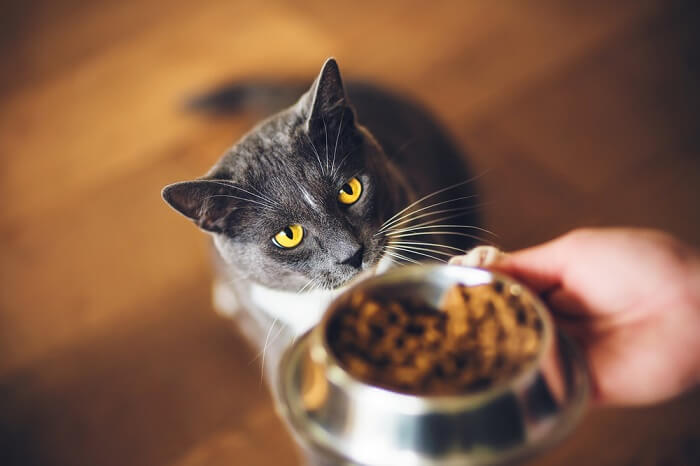
According to the manufacturer, the dose of FortiFlora is one packet of powder mixed into food once a day.
The box of FortiFlora comes with 30 1-gram packets. Each gram contains 100 million CFUs of Entercoccus faecium.
Per the manufacturer, the dose of FortiFlora is one packet fed once a day.
When or whether your cat should be on a probiotic, and how long your kitty should stay on a product like FortiFlora, should be discussed with your veterinarian.
Probiotics may be recommended for only a short period if a cat has a short, mild case of soft stool or diarrhea, or diarrhea associated with antibiotic use.
Also Read: Vet Approved Cat Stool Chart: Decoding Your Cat’s Poop
However, there may be other health conditions where a probiotic may be recommended for long-term use. Whether FortiFlora is used for a short-term or long-term period depends on your vet’s assessment of your cat’s condition and discussions you’ve had.
The FortiFlora powder packet is most commonly added to canned or wet food. FortiFlora has flavoring in the form of animal digest (a hydrolyzed pork/poultry ingredient now called “liver flavor”), so many cats may find it tasty.
However, as we all know, cats can be picky about what they eat. It is possible to mix FortiFlora with water. However, it may be more effective to mix it with a small volume of water in a syringe and administer it directly and carefully to your kitty that way to get the most benefit out of it.
Adding FortiFlora to a water bowl that your cat may come back to drink from a couple times a day is very unlikely to provide the same benefit. Because it is intended to be given every 24 hours, the full amount of the packet should be consumed within that period of time.
Conclusion
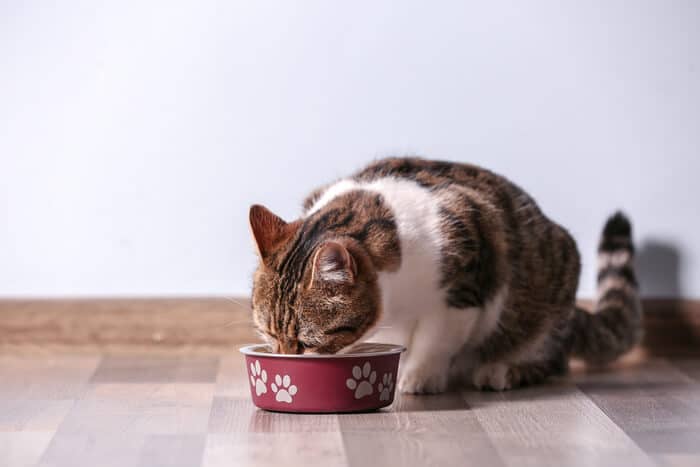
FortiFlora has been considered one of the top probiotic cat supplements used in veterinary medicine to help pets with diarrhea. Like most probiotics, it is considered to be safe and may be beneficial in helping to restore balance to a cat’s digestive tract.
The bacterial strain found in FortiFlora is a normal commensal organism of the digestive tract and is believed to carry far more benefits than risks in supplementation. While it is not a prescription item, you should still consult with your veterinarian about when to use FortiFlora and how long it should be used for.
Drug Dosing Disclaimer: We are only able to provide doses for medications that are FDA approved for use in cats and only as the label guidelines dictate. For medications that are used off-label we can only provide guidelines and safety information for use. Safe and appropriate dosing for off-label medications can only be determined by a primary care veterinarian.
We encourage you to work with your veterinarian to determine if a particular medication is appropriate for your cat. Changing or adjusting a dose for your cat on your own without consulting with a veterinarian can carry risk. We do not encourage use of medications prescribed for human use in pets without first consulting with a primary care veterinarian.
